There is this general rule that dark-colored rocks and minerals tend to contain more magnetic minerals and iron. While you’re scouring the ground looking for your next specimen to add to your collection you should keep an eye out for rocks that are opaque, black, and have a strong metallic luster because they have a high possibility of being strongly magnetic.
Igneous, sedimentary, and metamorphic rocks can be magnetic depending on the iron content. If you have a magnetic rock then more than likely it is metamorphic or sedimentary because they tend to have the most iron impurities. Serpentinites are a prime example of magnetic metamorphic rocks.
List of Magnetic Rocks
Most rock-forming minerals exhibit a low magnetic susceptibility but we are not here for the rocks having very little magnetism. The reason rocks are magnetic relates to the proportion of magnetic minerals such as ilmenite or magnetite they contain.
So, I put together a robust list of rocks and minerals with magnetic traits. Let’s dig into some incredibly magnetic stones and minerals.
Rockhounding Fun Fact: Some garnets, like highly ferrous almandine, peridot, and dark-colored spinels, can be magnetically attracted.
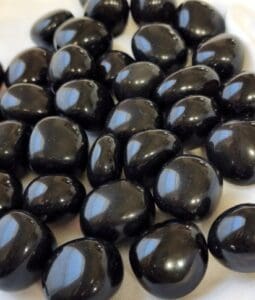
Obsidian
Obsidian has an abundance of magnetite and hematite which makes magnets drawn to it. The cool thing about obsidian is the availability of the material on every continent which makes it accessible to everyone. It can be found near volcanic activity within Japan, Russia, Kenya, New Zealand, Italy, Iceland, Greece, Hungary, Chile, Guatemala, Argentina, Mexica, Canada, and the United States.
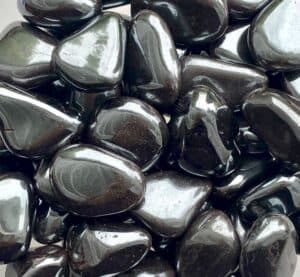
Hematite
Hematite is a type of iron ore and is composed of iron oxide and several other minerals. Its magnetism is due to the presence of iron and its crystalline structure, which is evident by its attraction to magnets. One cool fact about hematite is it’s used as radiation-shielding material.
Hematite has been found in areas including Canada’s Lake Superior region and Switzerland’s mountainous region, and traces have been discovered in South Africa and Brazil.
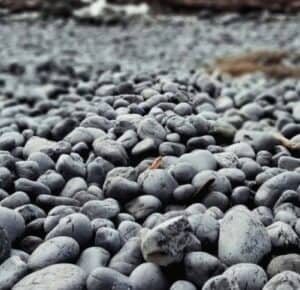
Basalt
To an extent, basalt can acquire strong magnetism as it cools due to the oxide minerals present.
Most basalt is found in the mid-continent waves and one of the most notable locations is in the Royale-Keweenaw region.
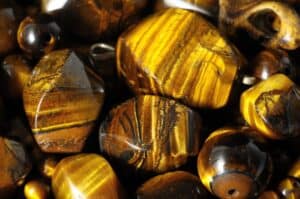
Tiger’s Eye
These beauties tend to have strong magnetic fields due to iron, magnetite, and hematite impurities. The higher the magnetite concentration the higher the magnetic properties.
Tiger’s Eye is found in locations like Brazil, Australia, Namibia, India, South Africa, and Burma.
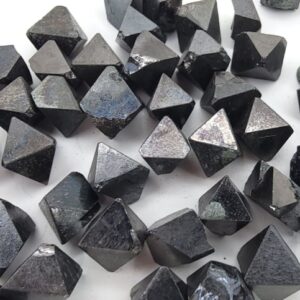
Magnetite
This rock is composed of iron ore, and it’s naturally ferromagnetic. It’s believed that magnetite attracts magnets, with the potential to become a permanent magnet itself.
If you’re looking to collect or add this to your specimen collection then the Lost River and the Jellyshroom Cave areas offer a great opportunity.
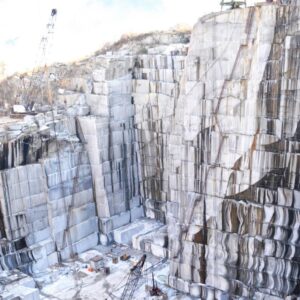
Granite
Granite doesn’t lack an abundance of iron minerals, which makes it magnetic due to its ability to attract magnets. Additionally, granite contains elements like ilmenite and magnetite that form oxide minerals, which contribute to its magnetism.
Because granite is such a well-known igneous rock, it’s widespread and found throughout the mountainous regions on every continent.
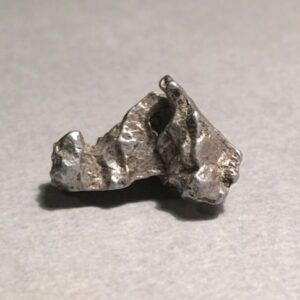
Nickel
When nickel is exposed to magnetic fields, it develops ferromagnetic properties, meaning it can attract and hold magnets, as well as act as a permanent magnet itself.
Deep within the planet’s interior, the elements that make up nickel can be found. Ferromagnetic metals like lodestone, manganese, cobalt, gadolinium, steel, and iron strongly attract nickel, tending to become permanently attached to it.
Metals like ilmenite, pentlandite, and garnierite can be found in Canada, Australia, and Russia ores.
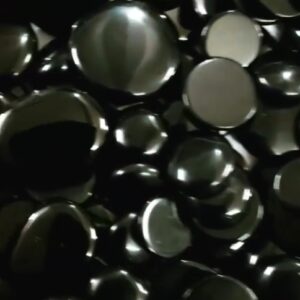
Onyx
In its natural state, black onyx contains iron oxide materials that attract magnets. This mineral has been mined in the United States, United Kingdom, Latin America, Indonesia, India, Pakistan, Madagascar, Germany, the Czech Republic, Brazil, China, Canada, Argentina, Uruguay, Yemen, and Australia.
Magnetic Minerals In Rocks
Magnetic minerals are the reason we have magnetic rocks. Without these minerals, magnetic rocks wouldn’t exist.

Magnetite
Magnetite is a ferrimagnetic mineral with the highest iron content.
Magnetite is commonly found with iron-bearing minerals attached to it. A lodestone doesn’t discharge because of the inhomogeneous crystalline structure that allows a lodestone to be a natural permanent magnet. Magnetite occurs in all rock types which gives the host rock magnetic properties. For example, if you have a quartz crystal with a large quantity of magnetite inside the crystal then it would have magnetic properties. Without the magnetite, the quartz would not exhibit magnetic behaviors.
When looking for magnetite in open pit mines or exposed mineral deposits you’ll want to be looking for an opaque black mineral with a beautiful metallic luster.
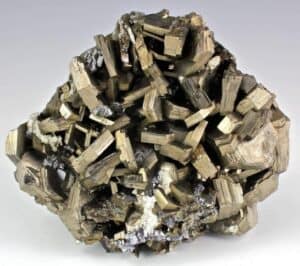
Pyrrhotite
Here we have the second most common magnetic mineral on the planet which is made of iron sulfide and has been found in metamorphic and igneous rocks. Interestingly, pyrrhotite’s chemical formula indicates that it’s deficient in iron, which causes the stone to be a bit too strongly magnetic. This rock is lighter than magnetite in color, with its bronze or dark brown hues being softer than magnetite.
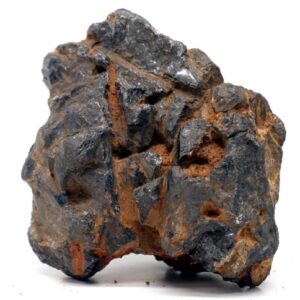
Ilmenite
This opaque black mineral occurs in a wide range of metamorphic and igneous rocks, especially gabbroic varieties.
Ilmenite is primarily found in sand and silt fractions because of its resistance to weathering. While it also has an opaque black color with a metallic luster, and similar hardness, unlike magnetite and pyrrhotite, it has a conchoidal fracture.
How Can Rocks Be Magnetic?
As surprising as it may seem, minerals and rocks can be magnetically attracted. Not all of them, only those containing a specific component, iron.
Some rocks are magnetic due to the presence of iron or iron-bearing minerals. Rocks with a high concentration of magnetite have more robust magnetic properties.
Ironstone – a sedimentary rock with the highest concentration of iron oxides is the most magnetic specimen we know of thus far.
How To Make Magnetic Rocks Float
Making magnetic rocks float is similar to making magnets float. The general idea is to create a magnetic rock float by holding it up using the repelling force of a magnet. Magnets have the ability to repel one another. The problem is that floating magnets tend to rotate around, flipping themselves to attract the other magnet.
- Identify Enstatite - March 12, 2024
- Identify Cerussite - March 3, 2024
- Identify Bytownite - February 18, 2024

4 Responses
I’m a collector of Bracelets and Stones, I came across a Pietersite Bracelet that is magnetic from a seller in China, I already have other Pietersite Bracelets that is not magnetic, but this one my latest purchase is magnetic, out of curiosity I bought it. WHY it is magnetic? what’s special about it? Is it RARE for Pietersite to be magnetic? Please inlighten me. Thank you.
Maria – It has a high iron content
I have several magnetic rocks and none look like any pictured here. I am in southwest Michigan area if that helps any,
Rachelle – Happy to help you ID them. Feel free to join the Pick & Shovel Newsletter. It’s free and gives you unlimited access to me for valuing and IDing stones.
I’ll email you directly as well.